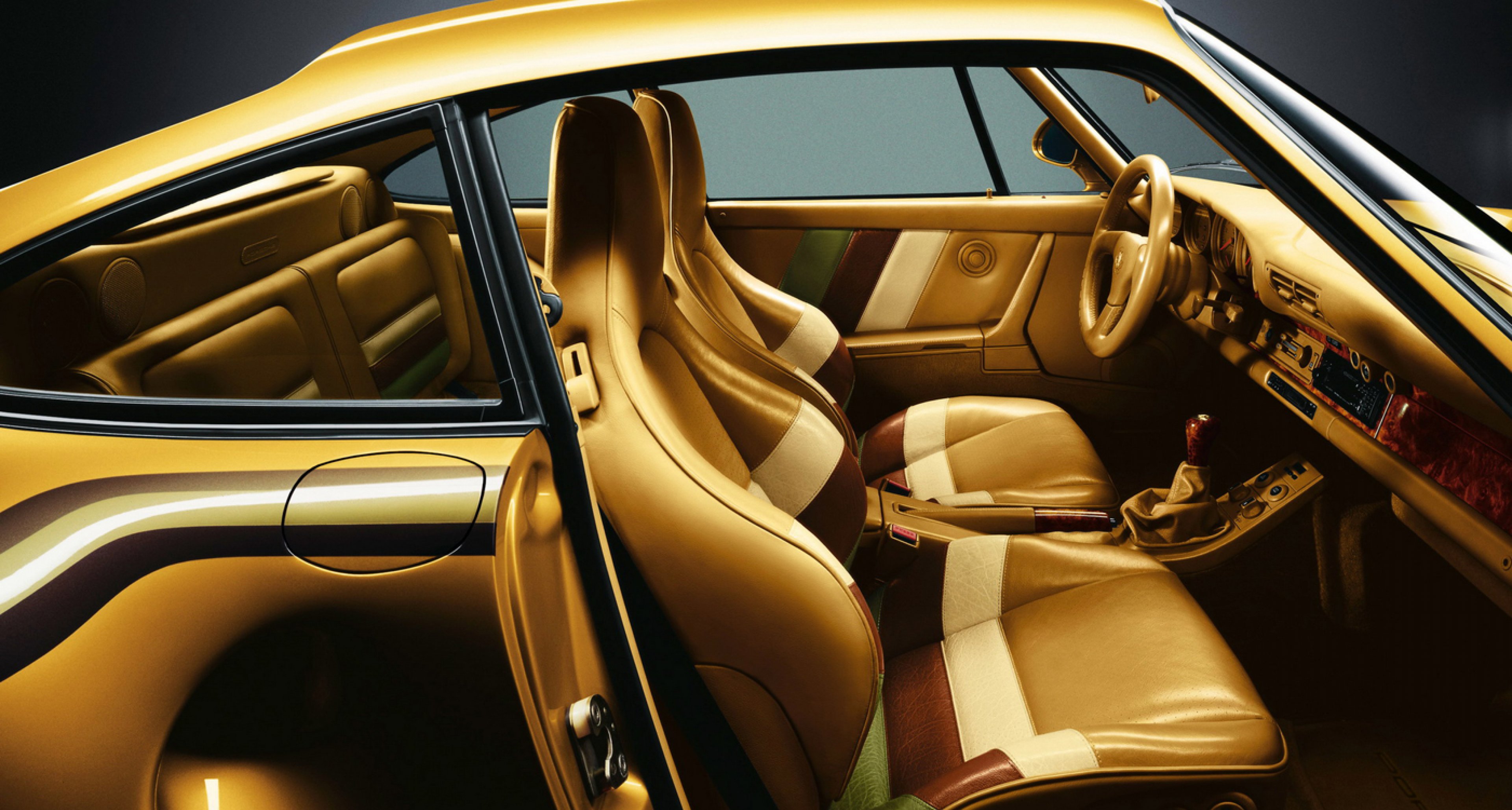
Porsche has always been a marque for the purist, but no matter how simple its cars were on the outside, the designers were often less restrained when it came to the interiors. We look back at the most unusual Porsche interiors, from the psychedelic to the hair-raising…
Down to earth
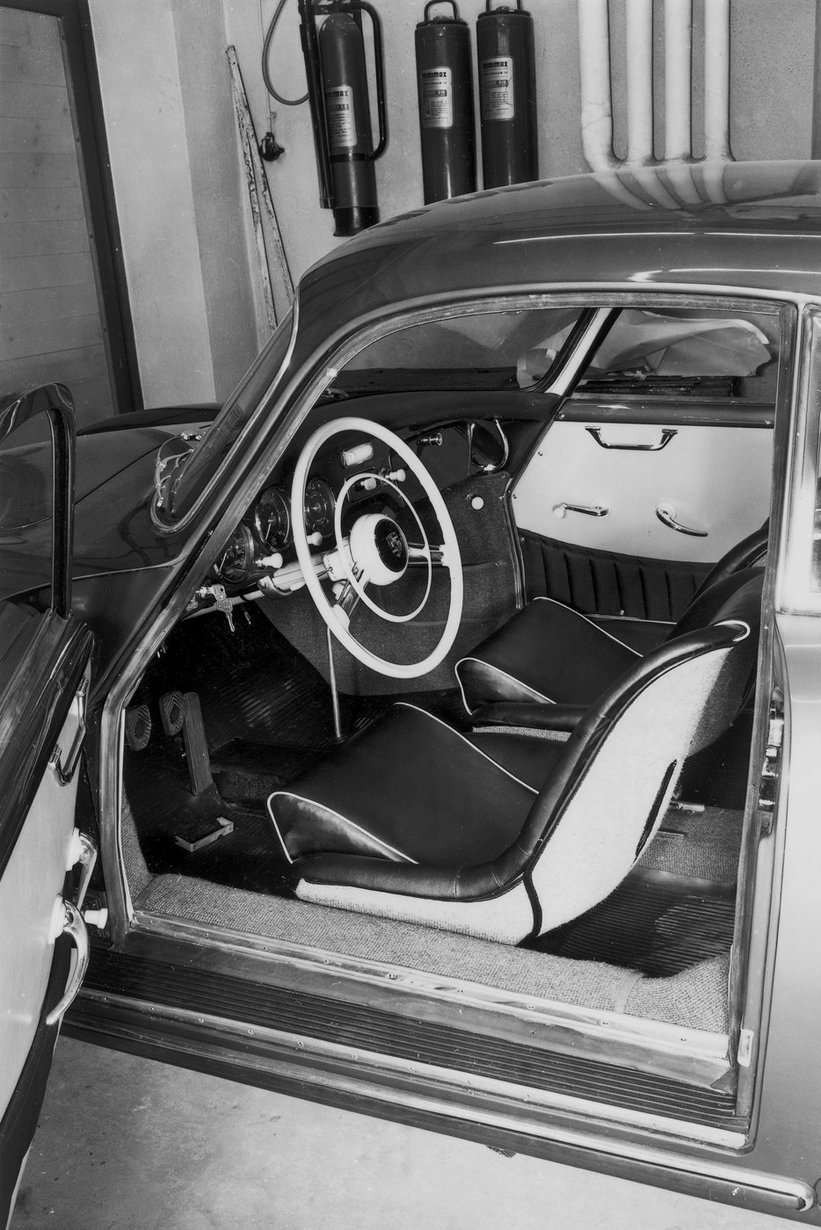
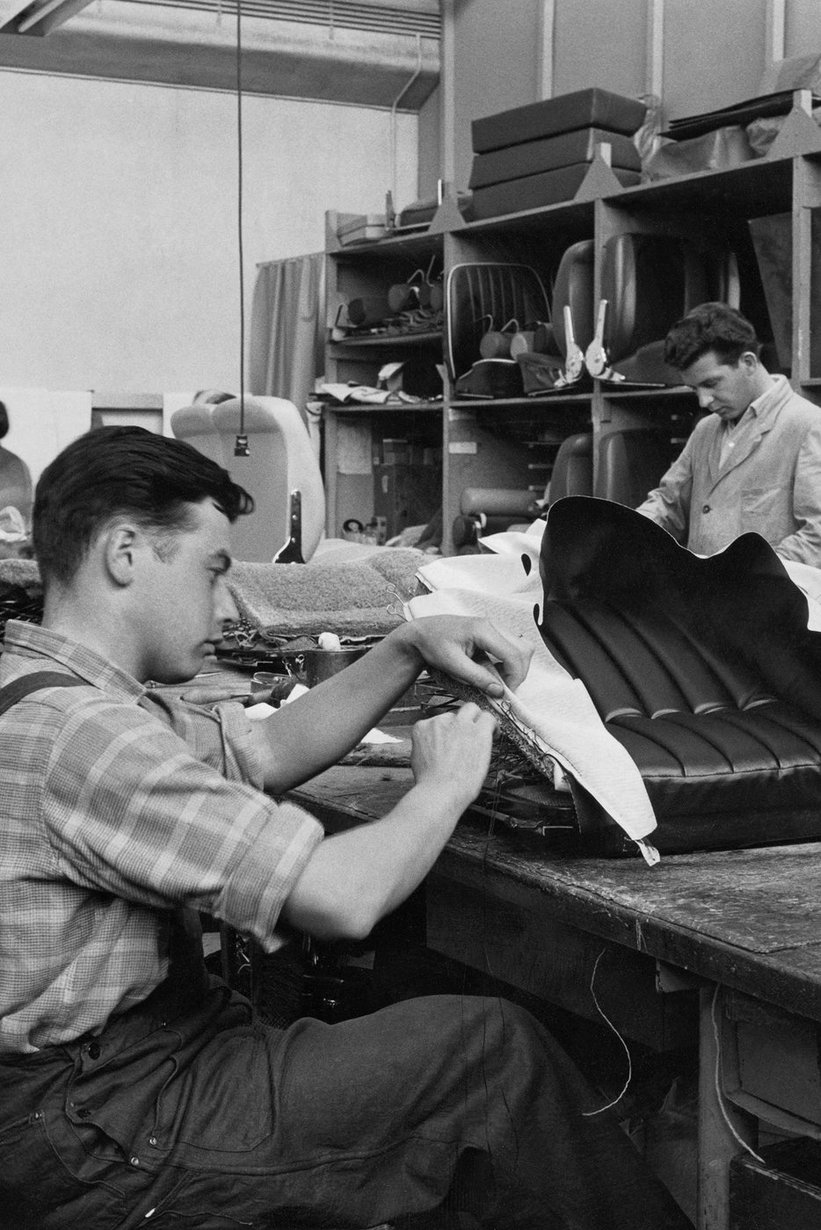
Honest, practical cars for everyday use – both the Porsche 356 and 911 owe their worldwide success to the solid Swabian ‘image’. It’s small wonder that the two cars’ ancestor was the VW Beetle, the most democratic automobile of them all. While other sports car manufacturers were battling for attention with flash designs and ever more powerful engines, Porsche remained largely faithful to its modest six-cylinder, rear-engined formula, cloaked in an unostentatious body. Not all of Porsche’s cars satisfied the purists, but the vast majority boasted sharp, typically German-engineered aesthetics.
From Pepita to Pasha
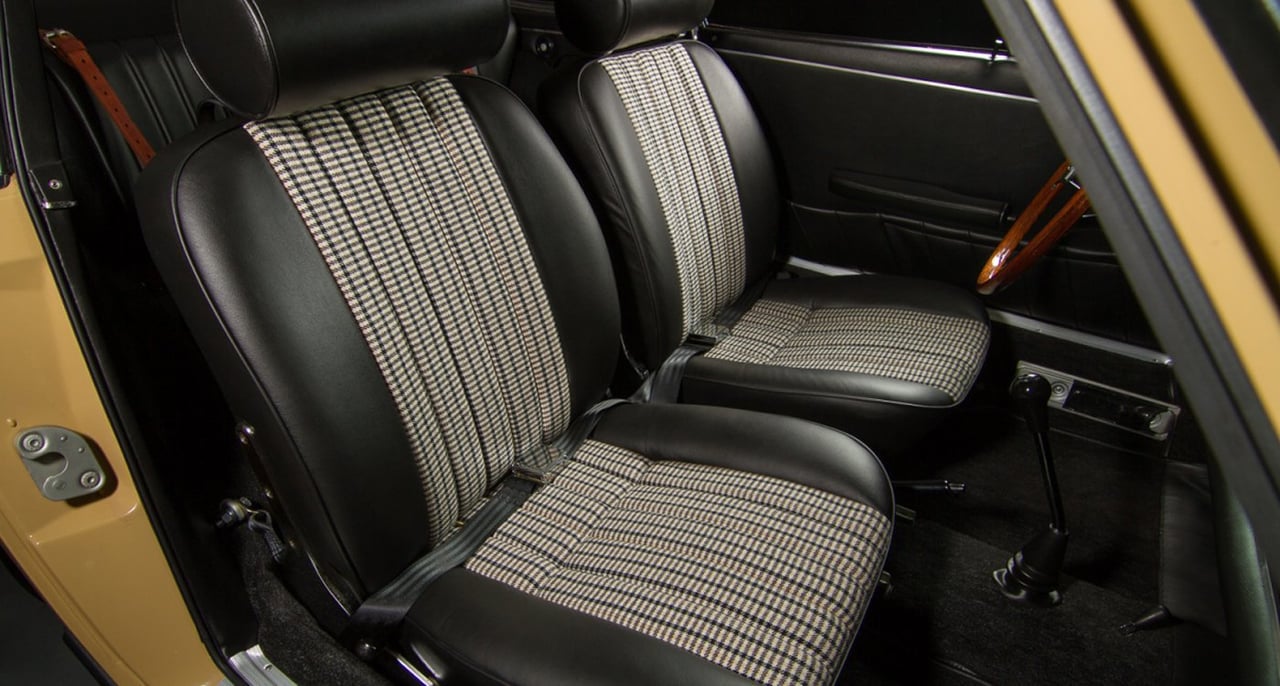
Given the cosmetic modesty of Porsche’s design, it’s surprising to see quite the opposite inside the marque’s cars. From very early on, seats were covered with alternative materials such as cord, tweed, or the ‘Pepita’ houndstooth pattern that proved so popular after the War. But this was just the beginning.
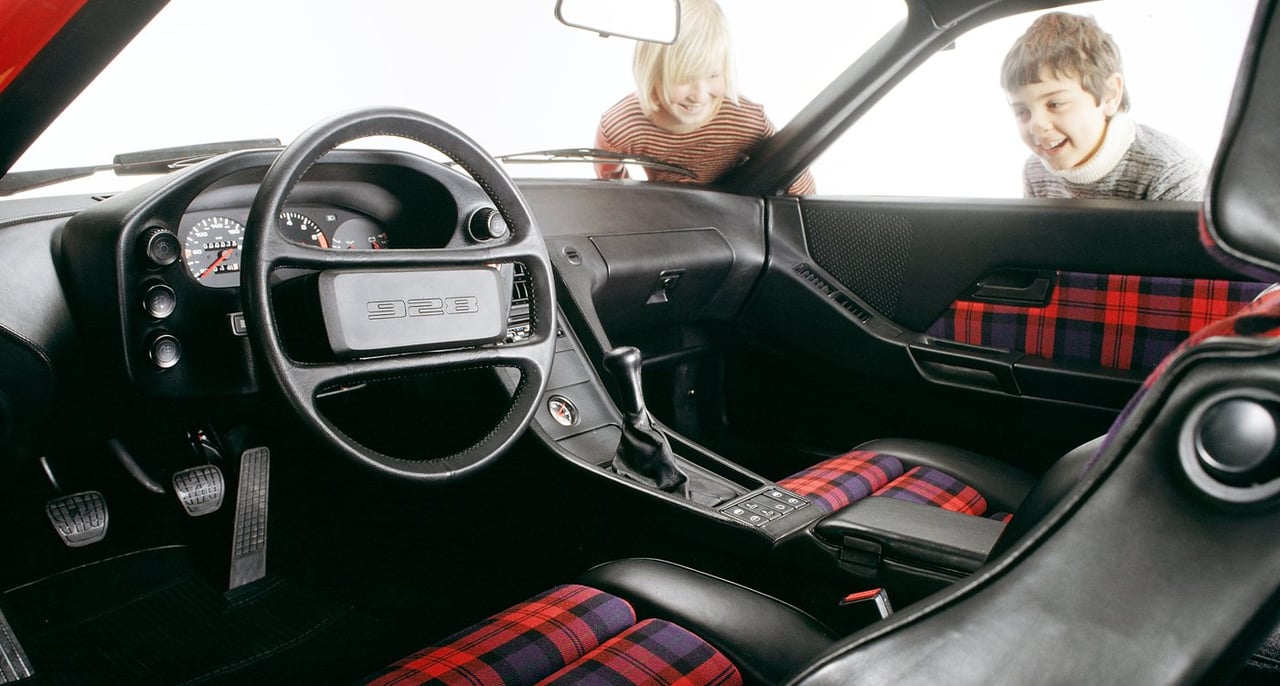

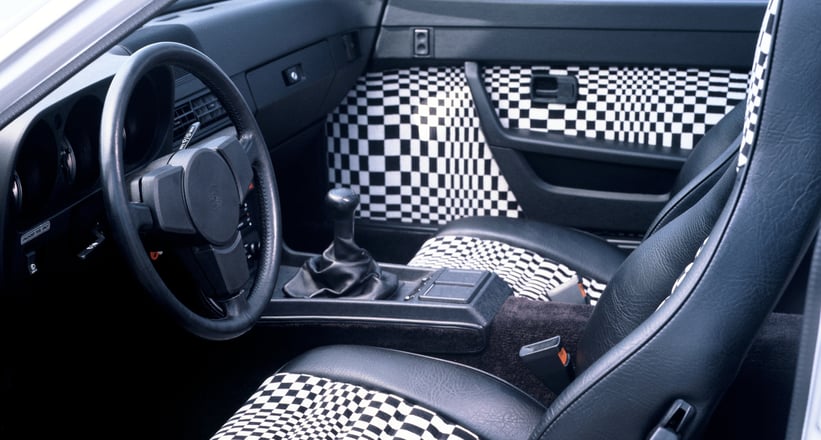
In the 1970s, the Porsche 911 and other new models such as the 914 and 928 were offered with a daring collection of interiors. The so-called ‘Pasha’ pattern was particularly disorientating, as though you were looking at a chess board while on LSD. A raft of other chequered, pinstriped and tartan fabrics – all of which enjoyed immense popularity throughout the decade – was also introduced.
Tiger print and flower power for the Piëch family
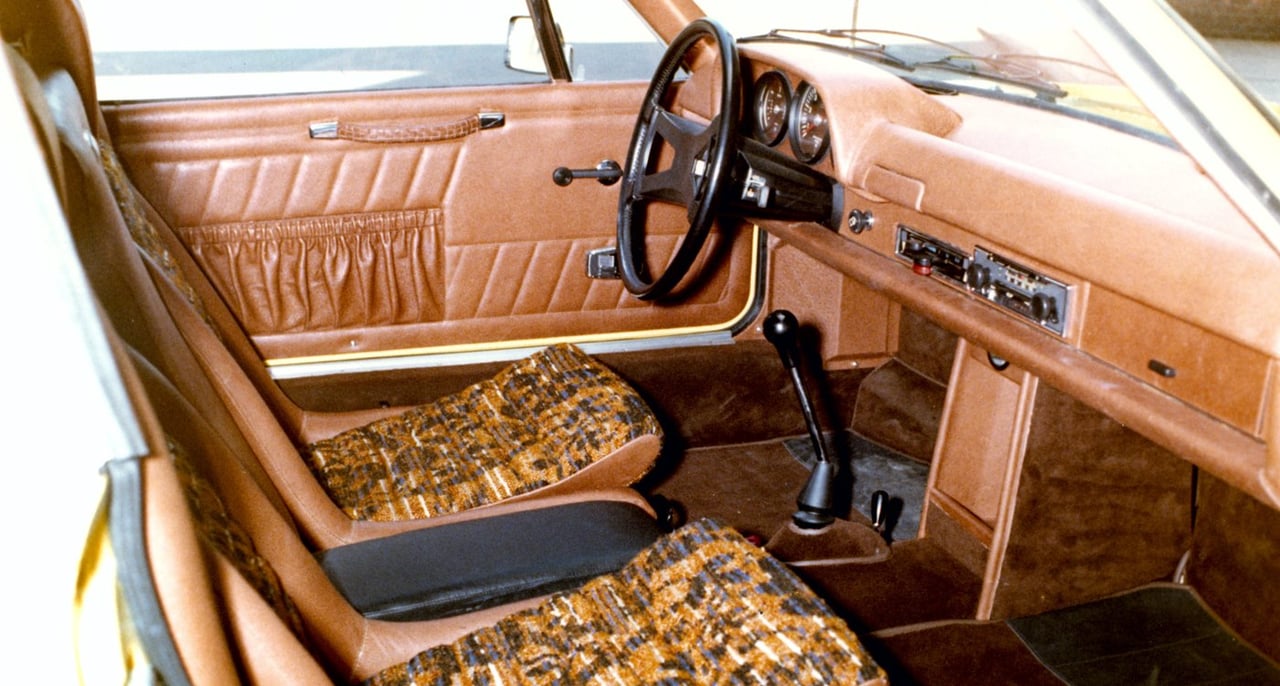
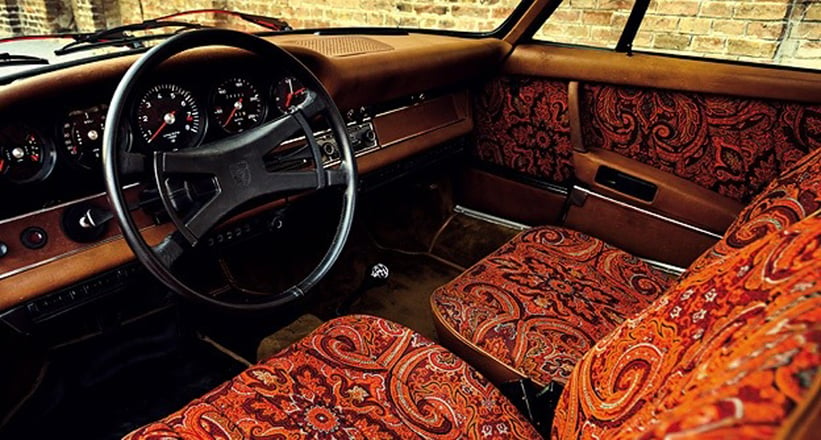
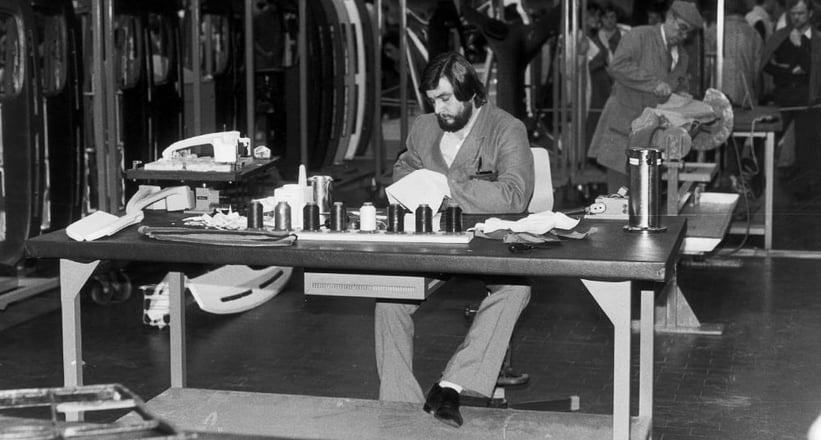
The Stuttgart-based marque’s designers showed just how wild they could be with special orders for the Porsche and Piëch families. Take the Carrera-engined Porsche 916, for example, of which just a few were ever built. One featured – believe it or not – a tiger-print interior. And then there was the fire-engine-red 1973 Carrera RS 2.7 that was built for Hans Michel Piëch, the seats of which were adorned with a paisley pattern. We wonder whether these unique cars still exist today?
Eighties excess
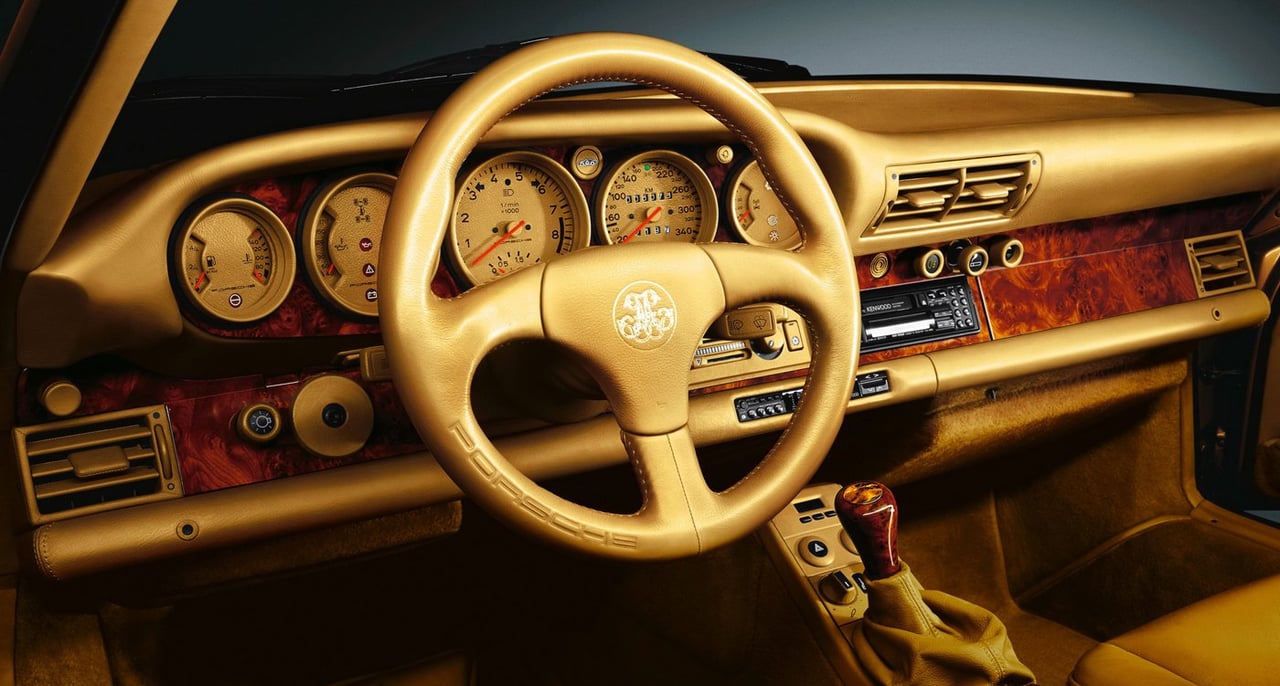
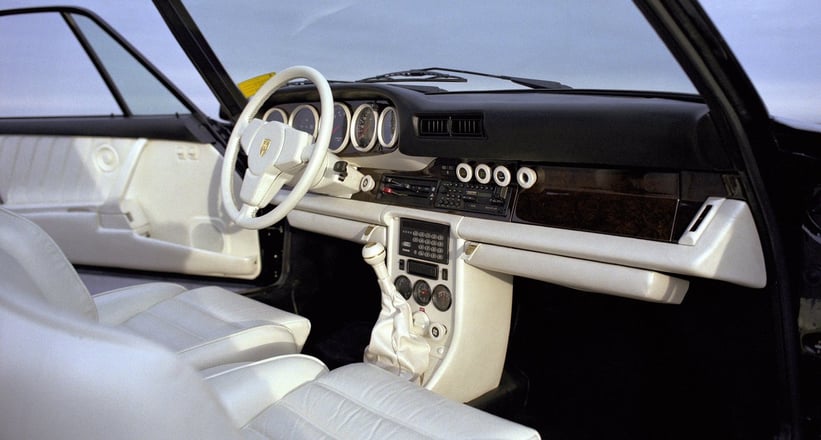

The excessive 1980s heralded the arrival of new design trends. While the 1981 Porsche 911 SC 50th Anniversary model’s burgundy red and grey-striped interior was considered daring at the time, the style soon became de rigueur. Glaring red or white leather that today causes us headaches at the mere sight, was considered extremely chic. It’s fair to say that tastes varied drastically in the 1980s, and a new ‘Porsche Exclusive’ division was created in 1986 to capitalise on the demand for more individual models. Responsible for a number of optional extras (including the famous flat-nose conversion of the 911 Turbo), the new division proved particularly popular for interior modification, where the boundaries of taste were once again pushed to the limits. A sheikh from Qatar, for example, ordered seven Porsche 959s, each with different colour leather interiors and his coat of arms emblazoned on the steering wheel and the seats.
Bright colours in a dark chapter
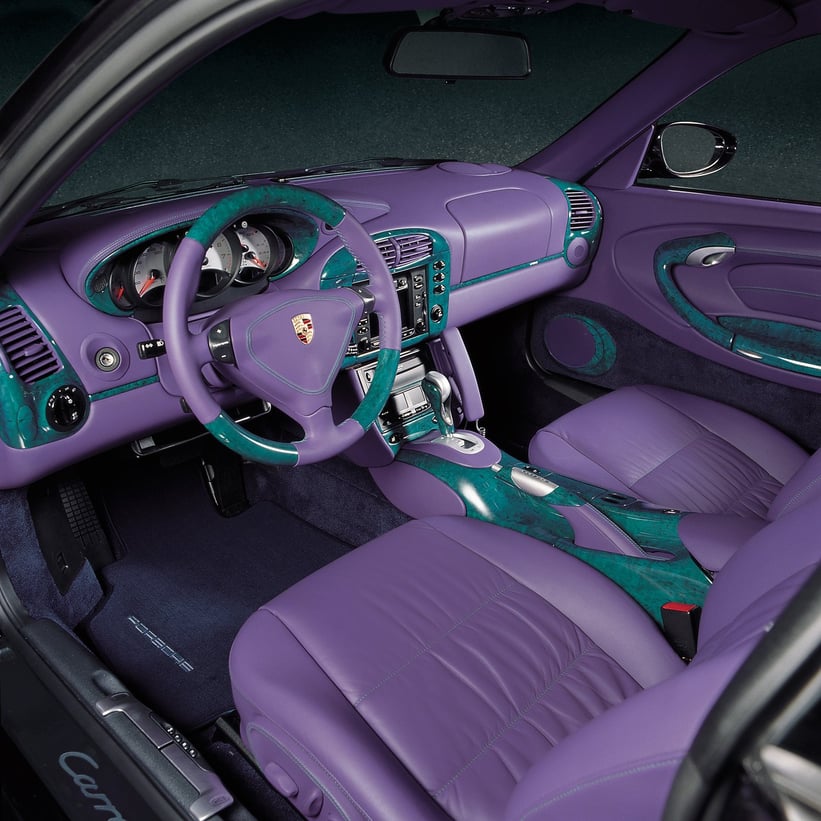
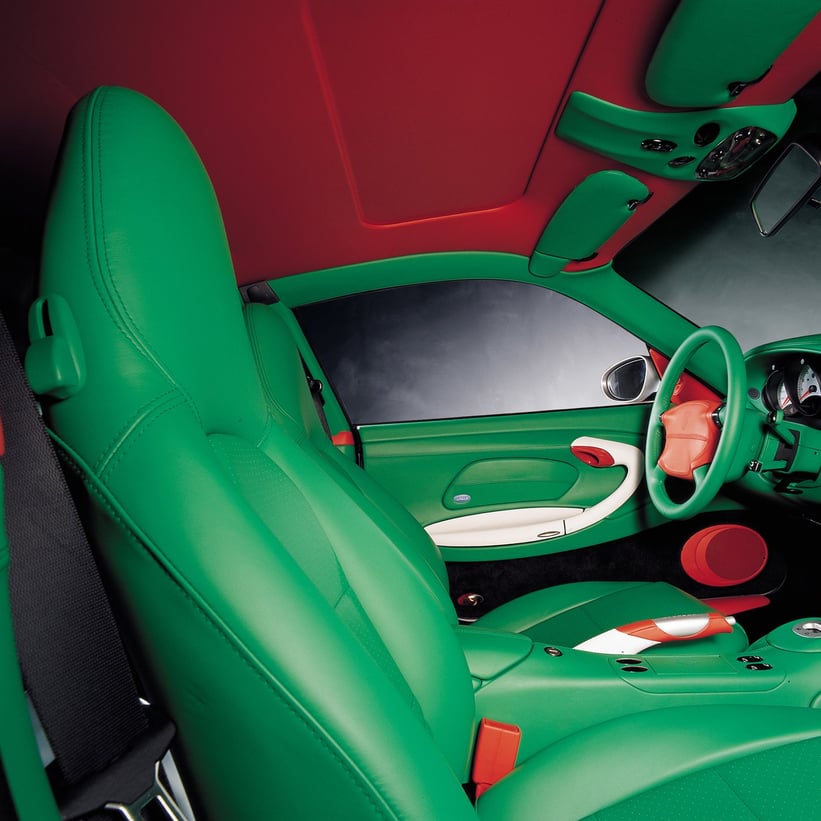
In the 1990s, the automotive world finally caught the bi-colour virus, and Porsche knew no restraint. The pictured interpretations of the 996-series 911 built for an Arab customer are arguably two of the most egregious interiors we’ve ever set eyes on – we’d have called them the Halloween and Christmas editions.
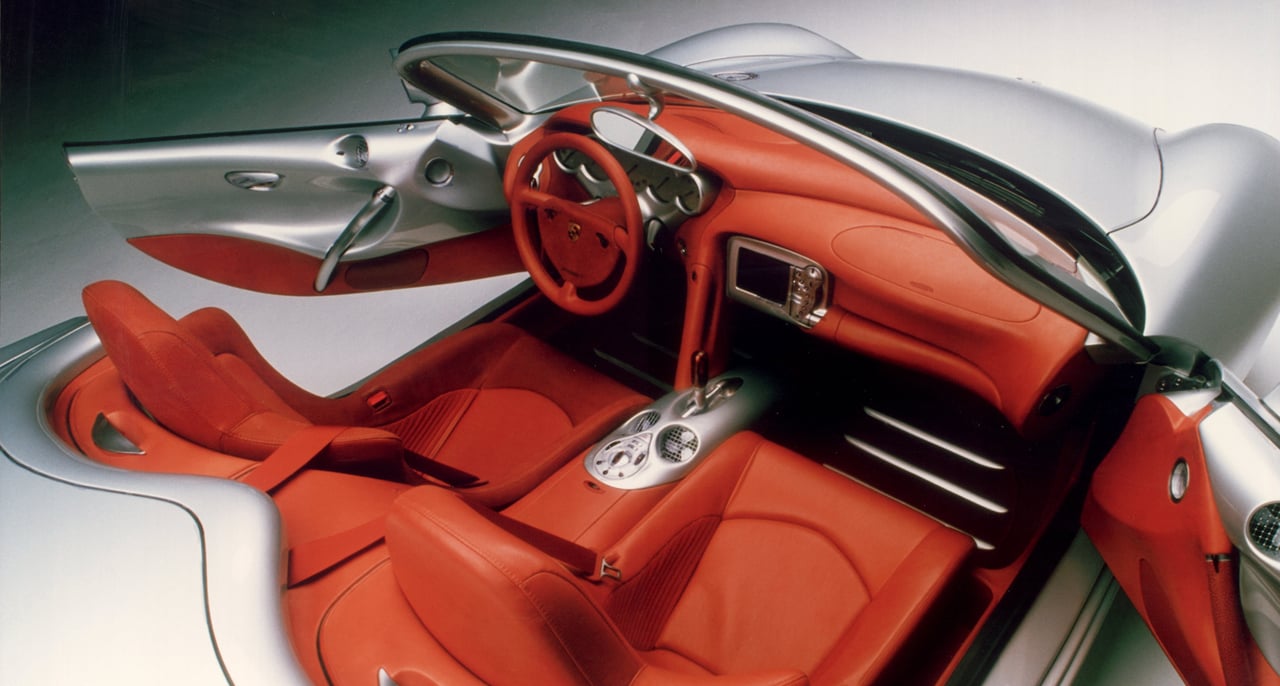
The horrors certainly didn’t end there. A combination of budget cuts and the questionable taste of the era led to both concept cars and production models (the first generation Boxster and the 996, for example) with interiors of which we don’t wish to be reminded. But time is a great healer, and we’re sure we’ll learn to appreciate – even love – the styling, just as we have with the once-despised designs of the 1970s and 1980s.
Back to the start
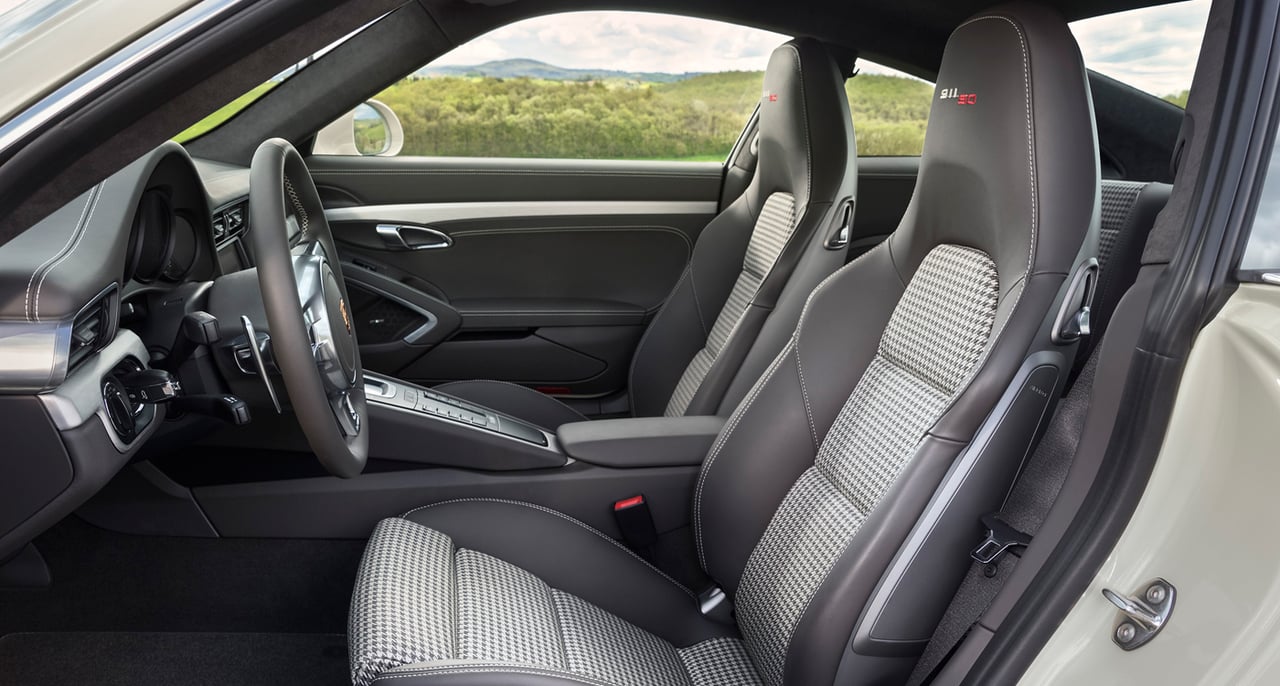
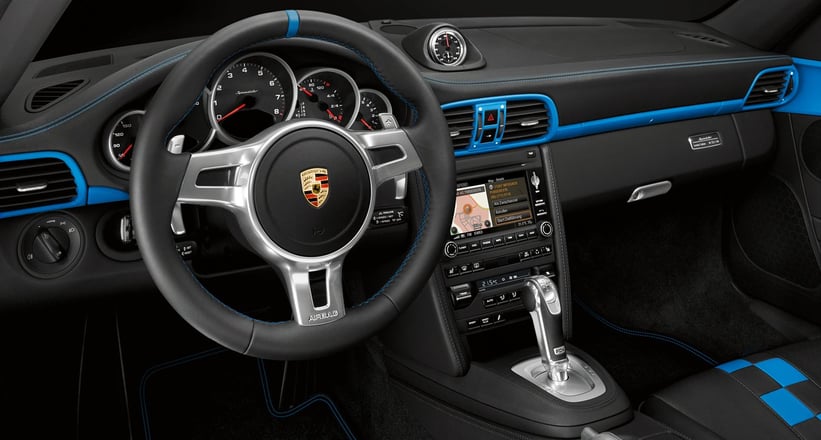
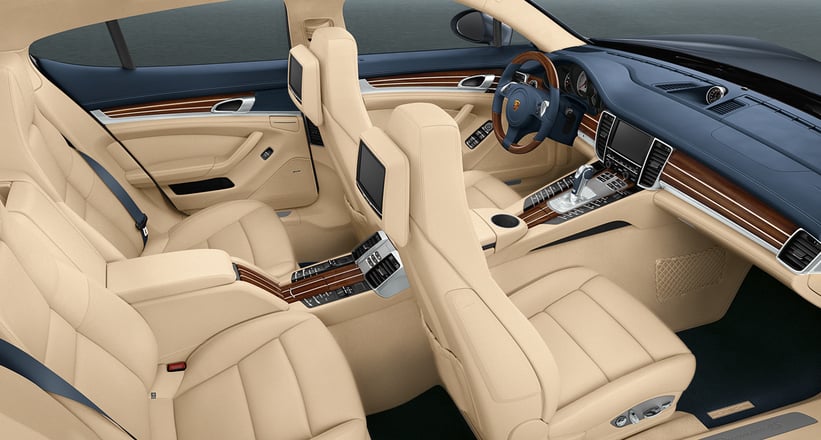
With the 997 Sport Classic of 2009, Porsche began to take inspiration from its illustrious heritage, with nods to the past such as the famous ducktail spoiler and Fuchs wheels. The following year’s 997 Speedster was a little too much of a reminder of the ghastly 1990s dual colour style, but the 50th Anniversary 911 hit the sweet spot, harking back to the very beginning, by sporting the same Pepita ‘houndstooth’ pattern found in the classic 911 some 50 years ago.
Photos: With thanks to the Porsche Archive
From Pepita to Pasha, you can find many Porsches with the famous interiors listed for sale in the Classic Driver Market.
